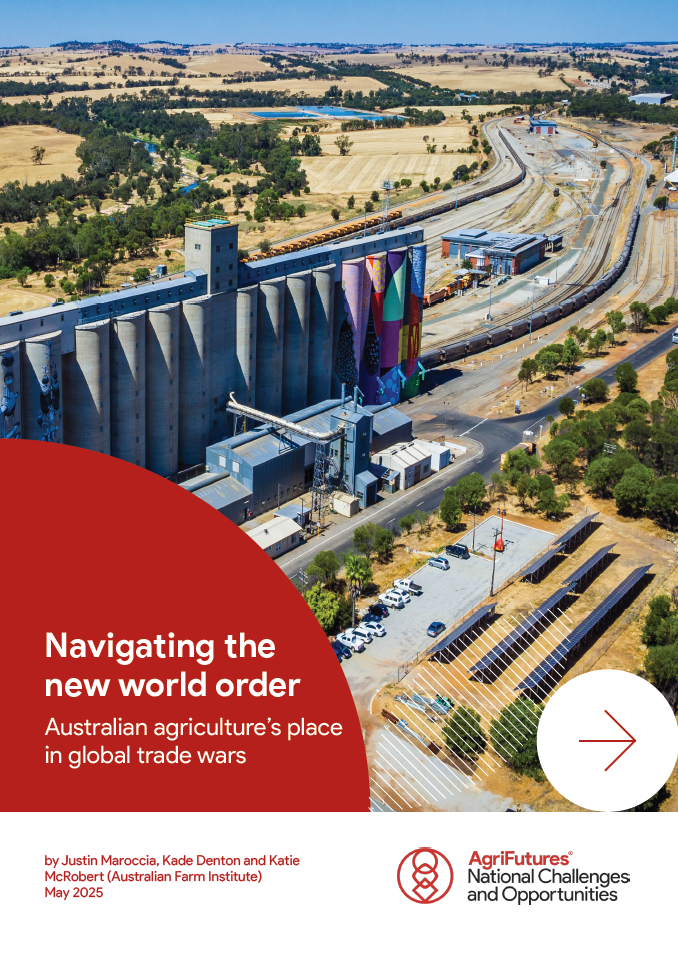Amidst a volatile global trade environment shaped by renewed United States (US) protectionist policies, Australian agriculture faces both significant risks and strategic opportunities. This report explores how the sector can survive and thrive in an era marked by escalating trade tensions, tariff uncertainty, and shifting geopolitical dynamics.
Australian agriculture is fundamentally export-oriented, with more than 70% of the value of production destined for international markets. Trade supports both farmgate returns through access to premium markets and reduced input costs via global supply chains. The US, a critical trading partner and the world’s largest economic power, has announced sweeping tariff measures under the current Presidential Administration’s “America First” agenda. While subject to uncertainty and changes, these actions include a flat 10% tariff on all imports and targeted tariffs on major trading partners. New, large-scale tariffs from the US risk disrupting trade flows and creating new global competitive pressures. Given this potential it is important to understand how new protectionist trade policies may affect Australian agriculture.
This report uses five scenario-based simulations—ranging from US tariffs targeting Australian, Chinese, Canadian, and European Union (EU) goods to a blanket global tariff—to evaluate the macroeconomic and sector-specific effects on Australian agriculture. It also examines the impact of tariff retaliation from China in response to US trade restrictions.





